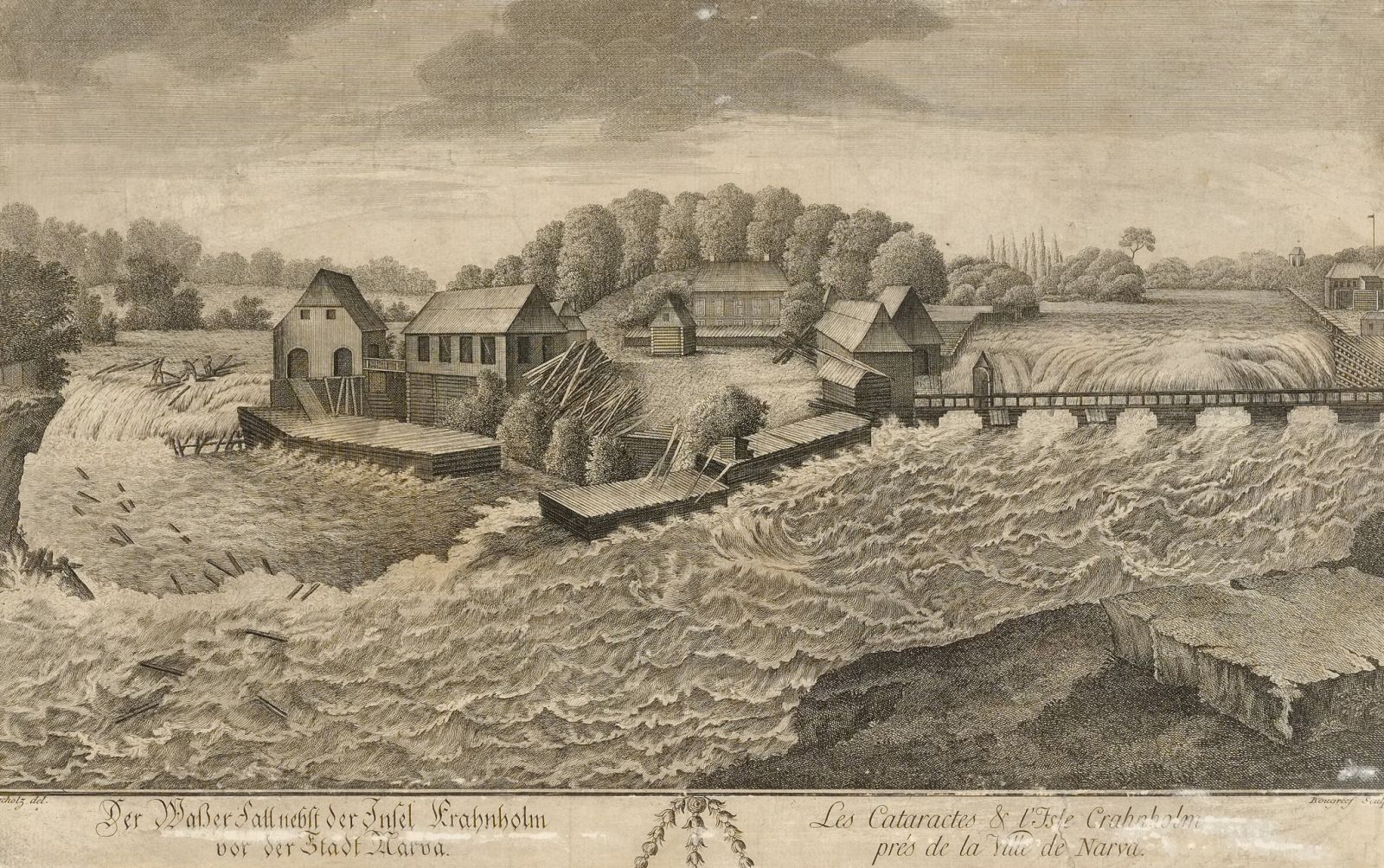KRENGOLM: The Unknown Past of "Crow Island"
The history of Krengolm Island, known in the distant past as Krokeholm or Crow Island (from Old Swedish), is rich with mystical renamings and significant events. From an uninhabited protected area to its transformation in the mid-17th century when Narva merchant Carl Suttgoff purchased it and renamed it Krönholm, meaning "Green Island," this land has always stirred the imaginations of those who found themselves here.
The industrialist Suttgoff not only built two sawmills on the island but also a summer house, which became a place of rest for nobility and inspiration for many writers and poets due to its magnificent view of the Narva waterfalls.
"Approaching the river, I was amazed by the majestic sight: the wide river, calmly carrying its waters until now, met resistance from huge stones, wondrously scattered across it by nature, forming entire cliffs. It struggled to break through the obstacles and, with a roar, fell into the abyss at the base of the cliffs. In its rush, it made lateral movements, carved new channels, and presented a series of waterfalls, each higher and more formidable than the last..."
Excerpt from "Travel Notes on Narva" (1834) by Konstantin Arsenyev
The second half of the 19th century marked the construction of one of the largest cotton factories in Europe. This enterprise, created by the ambitious entrepreneur Ludwig Knoop, significantly altered the landscape and life of the island. From a peasant village, the island transformed into a developed town with a hospital, school, market, and prison. The manufacturing buildings were surrounded by parks and gardens, with flowerbeds blooming under the windows of the houses.
"Even from afar, while crossing the bridge, workers could hear a dull roar and hum. And when people, having passed the gates and the gloomy vaulted passage, entered the first factory yard, this noise overwhelmed them like the roar of a raging sea, drowning out and absorbing all other sounds. Everywhere you look—walls and more walls, windows and more windows! And what a roar comes from behind those countless windows! In the darkening squares, you can't discern what is happening, but the majestic, powerful rumble that shakes the air and ground, the roar and rotation of machines that you can't see in the dark windows but rather sense—all speak of the feverish activity, the turbulent life boiling within."
Excerpt from Eduard Vilde's novel "Iron Hands" (1898)
A special place in the island's history is occupied by a tree planted by Tsarevich Nicholas Alexandrovich in 1858. Although this tree has not survived to our days, like the noise of the waterfalls and machines, today's Krengolm still embodies the spirit of the industrial might of past years.
Krengolm is not just an island but a symbol of industrial development and cultural heritage, continuing to attract researchers and tourists who wish to touch its rich past and feel the power of its historical significance.
.jpg)
J. Stolfat. Kreenholmi saar 1854. aastal,1916. EAA
.jpg)
Narva kosk saarega 1636. aastal. Graafika. NLM _ 111:157 K 2:157

Kosk ja Kreenholmi saar Narva lähistel. Graafika. 1780. NLM _ 111:156 K 2:156
